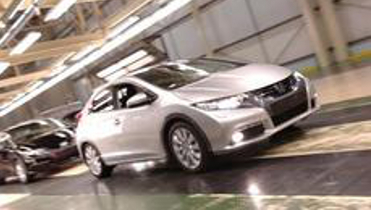Honda has given the public the first taste of how far machine-to-machine (M2M) and driverless car technology has advanced.
The car manufacturer has demonstrated technology that allows two connected Acura Sedan cars to ‘talk’ to each other enables a ‘virtual tow’ which allows one car to drive with no one behind the wheel, directed by the other.
Honda said that virtual tow was designed to allow drivers on the roads to assist each other when breakdowns occur.
The demonstration, which took place at the Intelligent Transportation Society of America (ITS) world congress in Detroit, showed how car manufacturers like Honda are merging the Internet of Things (IoT) and automated car engineering in novel ways, through partnerships with developers and third parties.
Although the Acura Sedan models are protoypes, Honda said that features like automated lane change and lane hazard information technologies will be in cars for 2015.
Honda has also developed cloud and connected car technology to detect and inform drivers of imminent hazards.
Rear-view cameras, which will be offered as standard on all models, will allow the automated technology to analyse hazards and automatically change lanes without human intervention. All of these were available to test by guests at the conference.
The manufacturer took the opportunity to reveal its vehicle-to-bicycle and vehicle-to-motorcycle technology, which allows a smartphone or motorbike to monitor whether a collision is imminent, and warn surrounding connected cars.
“The creation and deployment of advanced, intelligent transportation systems represent the new frontier in the effort to one day eliminate traffic collisions, injuries and fatalities,” said Frank Paluch, president of Honda R&D Americas, Inc.
“We will demonstrate our vision for realising Honda’s dream of a collision-free society by showcasing our continued technological innovations in active safety, connected and automated vehicle technology.”
Despite the onus on car safety, increased scrutiny on installed software security may put a dampner on public acceptance of automated driving technology, academics have warned.
Seeing Machines recently annouced that it is kitting out General Motors’ cars with driver monitoring technology to detect when a driver is distracted or in danger of falling asleep.
Computerworld







Subscribers 0
Fans 0
Followers 0
Followers